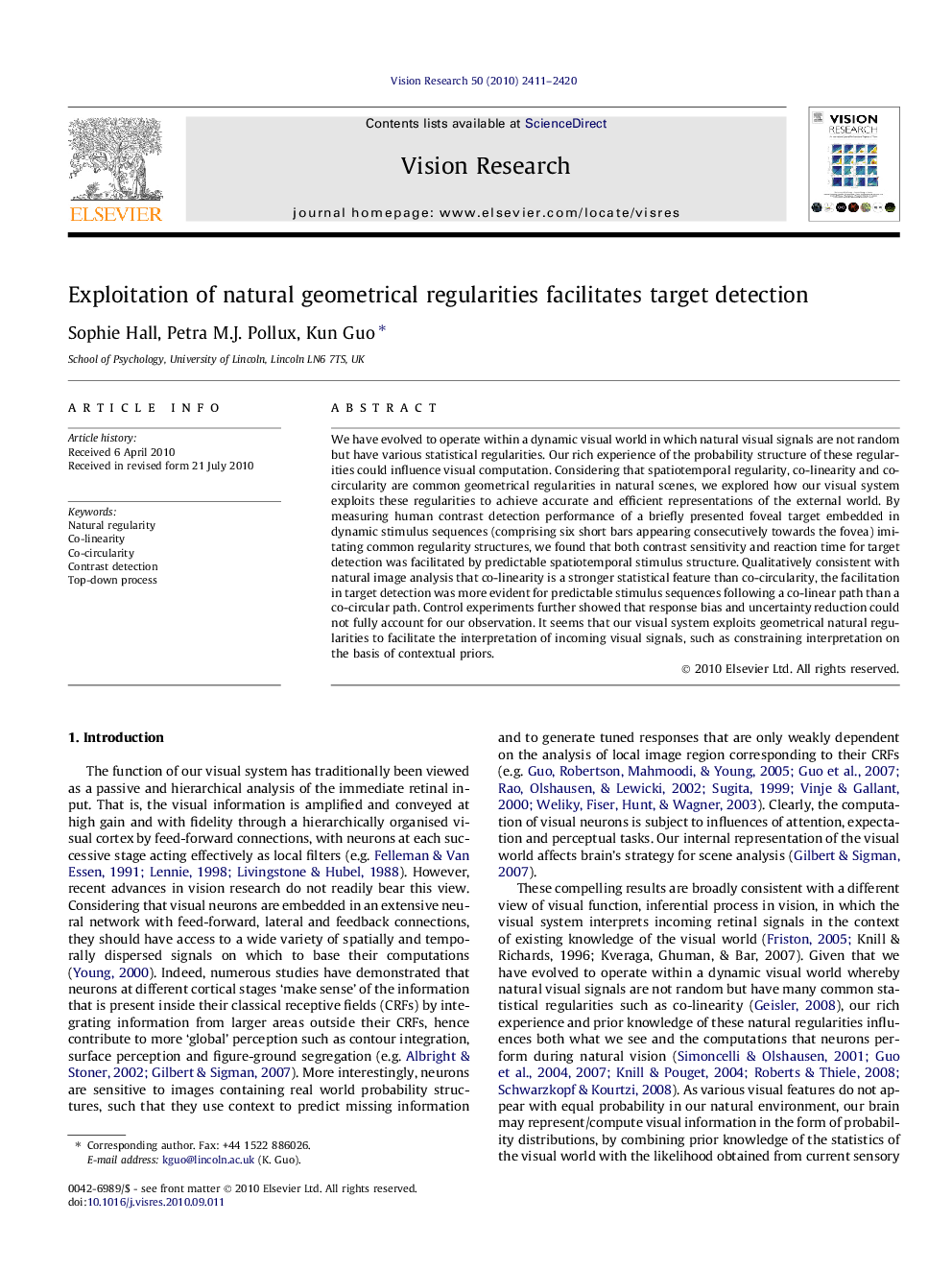| Article ID | Journal | Published Year | Pages | File Type |
|---|---|---|---|---|
| 6203806 | Vision Research | 2010 | 10 Pages |
We have evolved to operate within a dynamic visual world in which natural visual signals are not random but have various statistical regularities. Our rich experience of the probability structure of these regularities could influence visual computation. Considering that spatiotemporal regularity, co-linearity and co-circularity are common geometrical regularities in natural scenes, we explored how our visual system exploits these regularities to achieve accurate and efficient representations of the external world. By measuring human contrast detection performance of a briefly presented foveal target embedded in dynamic stimulus sequences (comprising six short bars appearing consecutively towards the fovea) imitating common regularity structures, we found that both contrast sensitivity and reaction time for target detection was facilitated by predictable spatiotemporal stimulus structure. Qualitatively consistent with natural image analysis that co-linearity is a stronger statistical feature than co-circularity, the facilitation in target detection was more evident for predictable stimulus sequences following a co-linear path than a co-circular path. Control experiments further showed that response bias and uncertainty reduction could not fully account for our observation. It seems that our visual system exploits geometrical natural regularities to facilitate the interpretation of incoming visual signals, such as constraining interpretation on the basis of contextual priors.
Research highlights⺠Target detection is facilitated by predictable spatiotemporal stimulus structure. ⺠Facilitation is more evident for dynamic co-linear than co-circular sequence. ⺠Local process cannot fully account for such facilitation. ⺠Brain exploits geometrical natural regularities to interpret visual inputs.
